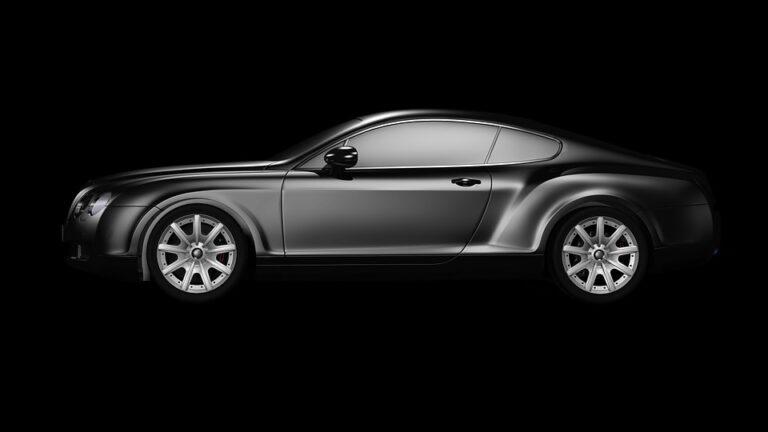Aerodynamics in Automotive Design: Enhancing Performance Through Shape
In the highly competitive automotive industry, where performance and efficiency are paramount, automotive design has evolved significantly to incorporate principles of aerodynamics. Engineers and designers are increasingly leveraging aerodynamic shapes to enhance vehicle performance, fuel efficiency, and overall stability. This article explores the crucial role of aerodynamics in automotive design, illustrating how shape can propel vehicles into the future.
The Importance of Aerodynamics in Automotive Design
Aerodynamics refers to the study of how air interacts with moving objects, and in the context of automotive design, it directly influences a vehicle’s speed, fuel consumption, and traction. As vehicles encounter air resistance, their shape becomes a key factor in minimizing drag, allowing for a smoother ride and improved performance.
Current Trends and Statistics
Recent studies indicate that reducing aerodynamic drag can lead to significant fuel savings. According to the U.S. Department of Energy, drag reduction can improve fuel efficiency by up to 15% for passenger vehicles. Moreover, consumers are increasingly prioritizing fuel-efficient vehicles, with a marked 20% increase in sales of hybrid and electric vehicles in 2022 alone. This shift showcases how crucial aerodynamic principles are becoming in automotive design.
Key Aerodynamic Principles in Automotive Design
To accomplish efficient automotive design, several aerodynamic principles must be integrated. Here are the primary factors to consider:
Streamlined Shapes
Vehicles designed with streamlined shapes experience less air resistance. A notable example is the Tesla Model S, which features a drag coefficient of 0.24, one of the lowest values for production vehicles. This sleek design allows for minimal turbulence, enhancing both speed and energy efficiency.
Downforce Generation
Aerodynamics isn’t just about reducing drag; it also involves generating downforce, which increases a car’s traction while cornering. Sports cars like the Ferrari 488 GTB utilize aerodynamics to balance drag and downforce, improving handling and stability. Designers achieve this through specialized features such as spoilers and diffusers.
Computational Fluid Dynamics (CFD)
The integration of advanced technologies such as Computational Fluid Dynamics (CFD) has revolutionized automotive design. Engineers use CFD simulations to visualize and analyze airflow around a vehicle, enabling them to fine-tune designs before physical prototypes are created. This technology not only speeds up the design process but also helps in achieving optimal aerodynamic performance.
Real-World Applications of Aerodynamic Design
Many manufacturers are successfully implementing these aerodynamic principles in their designs:
-
BMW i8: This hybrid sports car beautifully illustrates aerodynamics in automotive design. Its design features dynamic contours that facilitate airflow, contributing to its impressive performance and efficiency.
-
Ford Mustang: While often associated with power, recent iterations of the Mustang incorporate significant aerodynamic enhancements, such as an active grille shutter system that reduces drag when high cooling isn’t required.
- Porsche 911: Known for its iconic shape, the 911 has continuously adapted its design elements to improve aerodynamics without losing its brand identity. The latest models incorporate active aerodynamics technology, adjusting wing angles dynamically for better performance.
Analogies to Understand Aerodynamic Effects
Think of aerodynamics in automotive design like a swimmer moving through water. Just as a swimmer with a streamlined body can move faster than one creating more drag with broad strokes, vehicles with sleek profiles can navigate through air with less resistance. This analogy highlights the importance of shape in not only achieving higher speeds but also ensuring efficiency.
Challenges and Future of Aerodynamics in Automotive Design
While there have been significant advancements in the field of aerodynamics, challenges remain. Striking a balance between aesthetic appeal and aerodynamic efficiency continues to be a challenge for designers. The transition toward electric vehicles also demands new approaches to ventilation and thermal management, further complicating aerodynamics.
Conclusion: The Future of Automotive Design
The integration of aerodynamic principles into automotive design is not just an option; it’s a necessity for manufacturers looking to stay competitive. As technology advances and consumer expectations evolve, the focus on aerodynamics will only intensify. Automakers must continue to innovate, combining aesthetic beauty with aerodynamic efficiency to create vehicles that are not only visually appealing but also high-performing.
For those interested in a deeper understanding of current trends in the automotive industry, consider exploring these articles:
- The Evolution of Fuel Efficiency in Modern Vehicles
- The Role of Technology in Electric Vehicle Design
For further research, reputable sources like the U.S. Department of Energy provide insights into energy-efficient automotive technologies and design considerations.
Suggested Images
- Image 1: A streamlined sports car in motion. (Alt text: "Aerodynamic Sports Car Design Enhancing Performance")
- Image 2: Comparison of different vehicle shapes showcasing drag coefficients. (Alt text: "Automotive Design Drag Coefficient Comparison")
By embracing aerodynamic principles, the automotive industry is paving the way toward a more sustainable and high-performance future.


